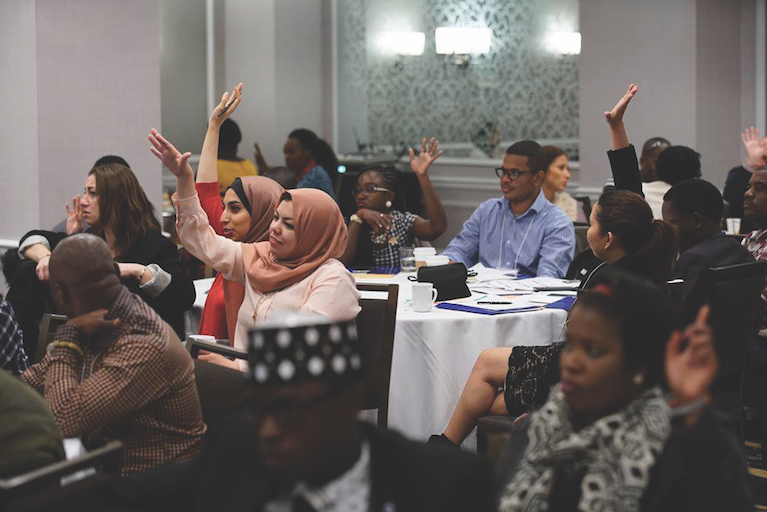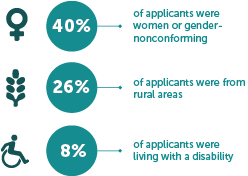How a fellowship program diversified its applicant pool using data

Ensuring applicants come from underrepresented groups allows programs to make the largest impact in participants’ home communities. But recruiting a diverse cadre of leaders can be a challenge. By analyzing data and adapting its recruitment efforts, the Community Solutions program attracted its most diverse cohort of participants ever. Here’s what we learned about using data to help ensure that opportunities are available to all communities—not just those that are easiest to reach.
Community Solutions, a program of the U.S. Department of State’s Bureau of Educational and Cultural Affairs, draws community leaders from 87 eligible countries to the U.S. every year for a four-month fellowship with a U.S. nonprofit organization or local government agency.
The program’s global nature can make outreach and recruitment difficult. In 2015, participants were recruited from only 55% of eligible countries, and 65% of participants were men.
Using data to inform decisions
To increase the diversity of applicant pools, we analyzed data throughout the recruitment process.
By analyzing applicant data between recruitment cycles and in real time as applications rolled in, we were able to shift midcourse and strategically target countries with low representation through additional, focused outreach.
This included increasing outreach to LGBTQ and women’s organizations; sending reminder e-mails to target populations who had begun, but not finished, applications; and featuring at least one woman in every social media post.
Application submissions increased by 550%
By using data to adapt, the program attracted its most diverse cohort of participants ever.
In 2018, 5,822 people applied—the most in the program’s history. Finalists were from 98% of eligible countries. The program had its highest percentage of women and gender-nonconforming applicants ever (40%). Applicants from rural areas represented nearly 26% of applications.

Lessons from the field
We learned a number of lessons to inform strategic planning for future cycles. This planning has resulted in the production and dissemination of a new recruitment video; outreach to 107 regional recruitment partners, including 26 disability organizations, 25 LGBTQ organizations, 25 IREX programs, and 13 women’s organizations; and 1,197 individual e-mail responses to applicant inquiries.
Analyzing data and adapting recruitment efforts during the application process and between recruitment cycles can increase the diversity of applicant pools. Ultimately, this ensures that all communities benefit from leadership development opportunities, not just the communities that are easiest to reach.
The Community Solutions Program is a program of the U.S. Department of State’s Bureau of Educational and Cultural Affairs. The program is implemented by IREX.